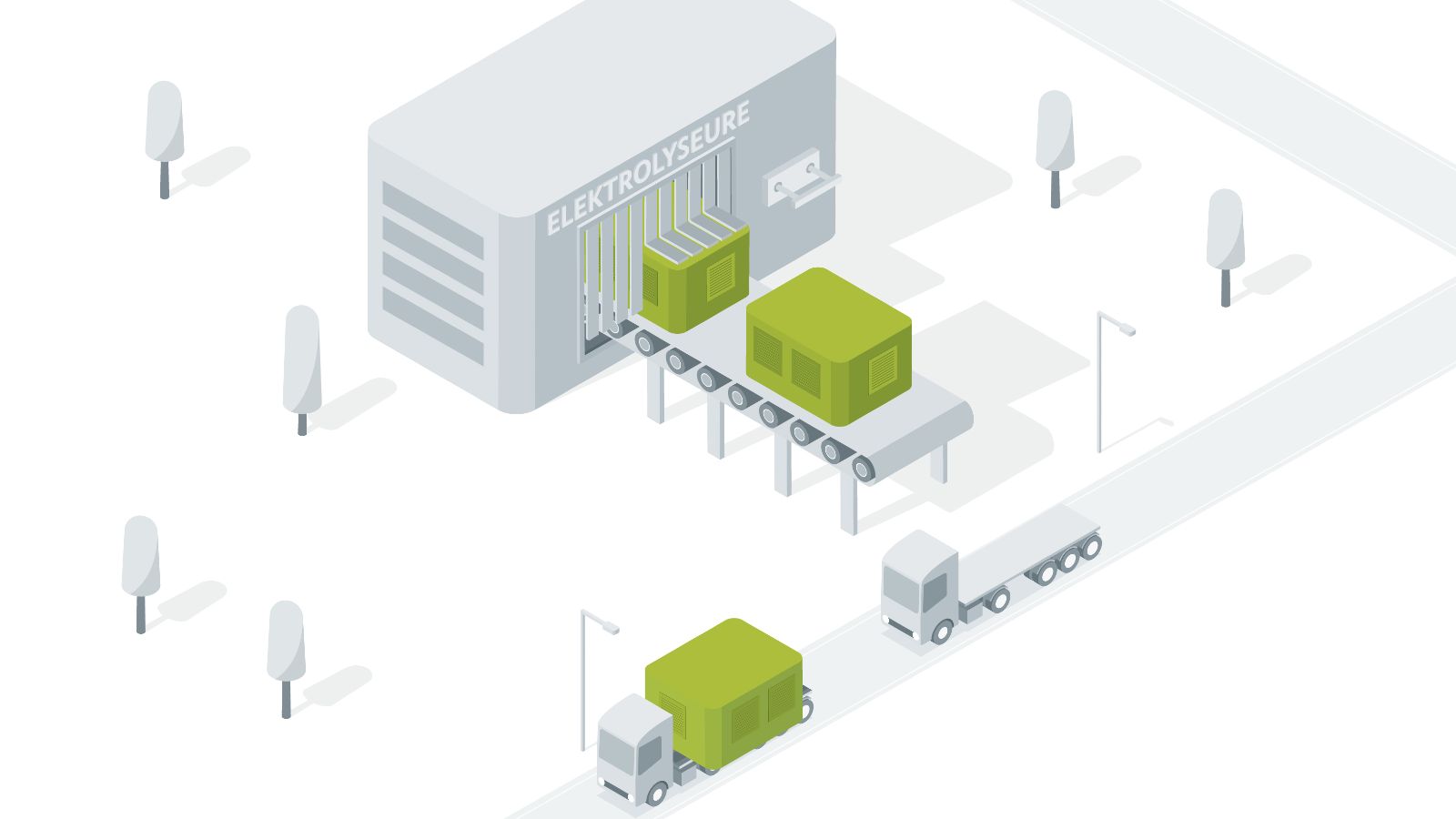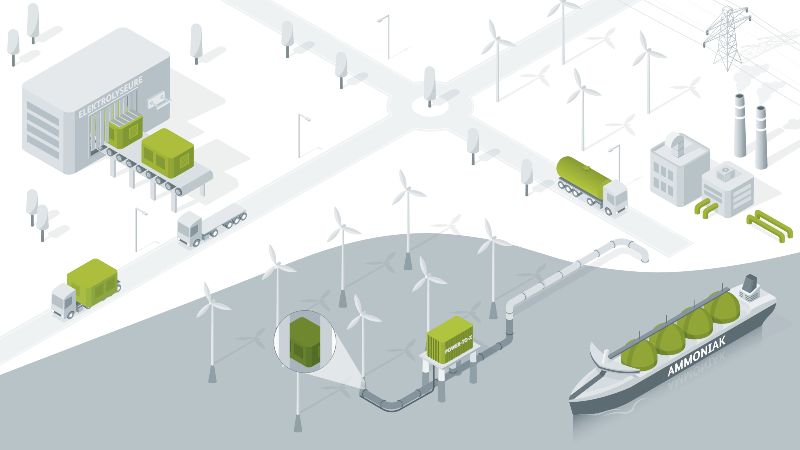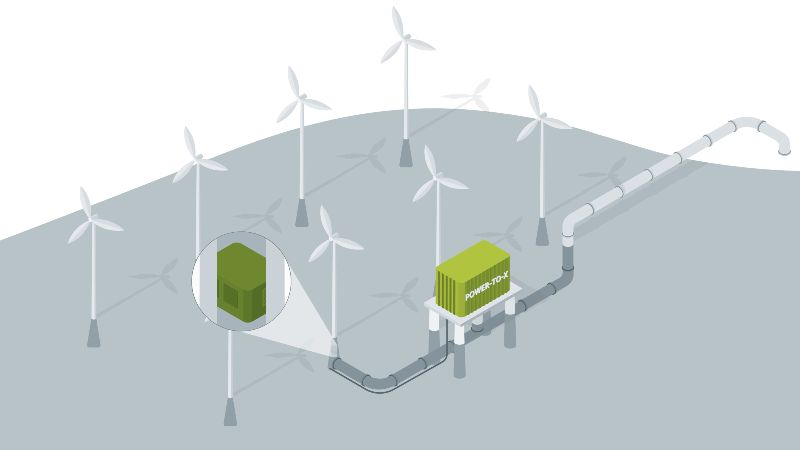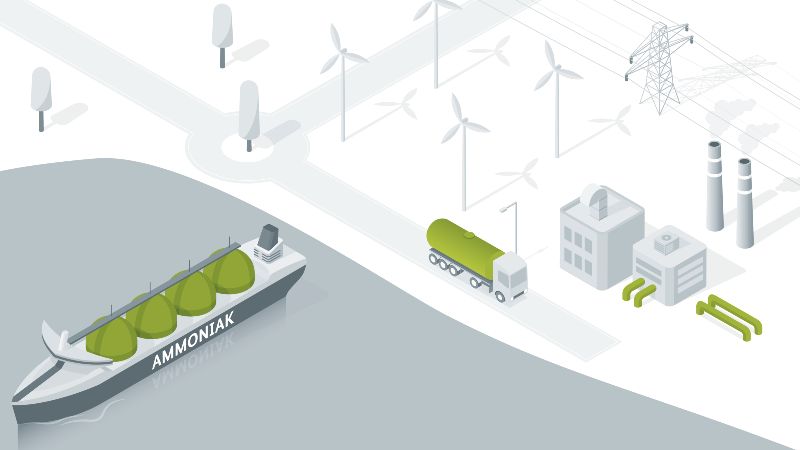H2Giga
How the H2Giga flagship project aims to mass produce electrolysers for the production and scale-up of hydrogen
To cover Germany’s demand for green hydrogen, large capacities of efficient and cost-effective electrolysers are needed. Although efficient electrolysers are already on the market today, they are usually still produced by hand. The H2Giga flagship project will therefore support the series production of electrolysers.

It is still unclear just how high the demand for green hydrogen will be in Germany. It is, however, certain that the demand will amount to several million tonnes of hydrogen annually. In Germany alone, the National Hydrogen Strategy aims to expand the electrolysis capacity to 5 gigawatts by 2030.
To this end, efficient, durable, robust, cost-effective, and scalable electrolysers are needed. Although large electrolysers that work efficiently and over long periods of time are already on the market today, they are usually still produced by hand. This process is time-consuming, cost-intensive, and prone to errors. Therefore, the series production of electrolysers that can be modularly adapted to their various sites of deployment is required. Electrolysers that are produced in series are also necessary to make green hydrogen competitive.
The H2Giga flagship project therefore focuses on establishing the series production of electrolysers in a manner that is not limited to specific technologies. Together, established manufacturers of electrolysers, suppliers from various technology sectors (including many small and medium-sized enterprises) as well as research institutions and universities are working on the advancement of existing electrolysis technologies. The following technologies will then be ready for series production:
- PEM electrolysis
- Alkaline electrolysis (AEL)
- High-temperature electrolysis (HTEL)
Furthermore, research aims to further develop anion exchange membrane (AEM) electrolysis.
In all these processes, renewable electricity is used to split water into hydrogen and oxygen. The difference between the processes is the way in which this is carried out.
The different types of electrolysers are particularly well suited for specific areas of application. Therefore, the development and scaling of the individual technologies will be coordinated with the industries in which they will subsequently be used. Furthermore, the flagship project will ensure a constant exchange between industry and science, with industry communicating its needs and knowledge gaps to science.
To this end, efficient production processes will be developed in the near future that also take into account aspects such as recycling and flexible operation. Flexible means that electrolysers can be switched on and off as quickly as possible and that they can be operated at different power levels.
Moreover, the ”Innovation Pool” projects will guarantee that H2Giga continues to be innovative in the future. The flagship project will also provide training and development opportunities and thus create a large number of jobs in future.
H2Giga projects
H2Giga includes numerous scale-up projects. Within the scope of these projects, manufacturers of electrolysers aim to ensure that established electrolysis processes are ready for industrial production (PEM electrolysis, alkaline water electrolysis, high-temperature electrolysis). At present, electrolysers are usually produced by hand. The scale-up projects strive to change this. The challenges range from the materials used and the scale-up itself to technologies for manufacturing the electrolysers. Industry and research are working together on these issues in order to achieve the automated production of electrolysers on a gigawatt scale.
Some types of electrolysers are at a sufficient stage of development to be used in series production. Other electrolysis processes are also promising. Some do not require any noble metals at all; others are highly efficient. Therefore, three Next Generation Scale-up projects focus on the technologies of tomorrow and beyond as part of H2Giga. The aim is to develop new processes and test them on a larger scale. In addition, the partners in this area are working on new designs for various electrolyzer components to reduce manufacturing costs and simplify series production in future.
The science-related Innovation Pool projects investigate and develop interdisciplinary processes, technologies, and components related to electrolysis, particularly focusing on testing new materials and production technologies as well as issues concerning lifetimes, recyclability, and automation options. In addition, industry can communicate its needs and knowledge gaps to science within the scope of the projects. This ensures that the flagship H2Giga maintains its innovation capacity.
These are the partners from H2Giga (in German)
The data shows the implementing agencies of the H2Giga partners (as of 13.12.2021).





